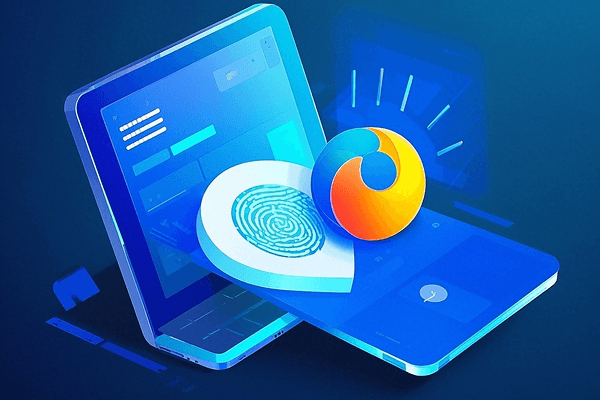
Hot Picks
How to run Facebook ads in 2025? Ideas

Hot Picks
How to promote on Amazon? Sharing various promotion methods

Hot Picks
Choose BitBrowser for fingerprint browsers, and look for the only official website: bitbrowser.cn
Application Analysis of Fingerprint Browser Security
Time: 2024-12-31 16:01 Click:

Browser fingerprinting
Similar to a person's appearance and fingerprints, web clients (mainly referring to browsers here) also have various "appearance" and "fingerprint" information. After comprehensive analysis and calculation of these information, the client can uniquely identify, lock, track and understand Internet user behavior and personal data.
basic fingerprint
The basic fingerprint is the characteristic identification of the browser, such as hardware type, operating system, user agent, system font, language, screen resolution, browser plug-ins (Flash, Silverlight, Java, etc.), browser extensions, browser settings, time zone differences These fingerprint information are similar to people's height, age, etc., which are likely to conflict and can only be added as auxiliary identification.
Advanced Fingerprint
Basic fingerprints are like a person's physical characteristics. Appearance can be differentiated by male, female, height and weight. However, these features cannot uniquely identify a person, nor can a customer be uniquely identified only by basic fingerprints. Advanced fingerprints based on HTML5 provide a new idea for this.
Canvas Fingerprint
When it comes to advanced fingerprint recognition, we have to mention canvas fingerprint recognition. Canvas is an HTML5 dynamic drawing tag that can also be used for advanced image generation and manipulation.
AudioContext fingerprint
Using the audio API provided by HTML5 for JavaScript programming, developers can directly operate the original audio stream data in their codes to improve timbre, change pitch, audio segmentation and other operations. It can even be called the web version of Adobe Audition.
The principle of AudioContext fingerprint recognition is roughly as follows.
It generates a stream of audio information (triangular wave), performs FFT transformation, calculates SHA value as a fingerprint, and transparently cleans the audio before outputting it to the audio device.
The basic principle of AudioContext fingerprint recognition:
Subtle differences in host or browser hardware or software result in differences in audio signal processing, with the same browser on the same device producing the same audio output, and different machines or different browsers producing the same audio output.
AudioContext and Canvas fingerprints are very similar in principle. Both exploit differences in hardware or software, with the former generating audio and the latter generating images, computing different hash values as identifiers.
Technology companies use big data to create a general portrait of you and push information based on your preferences.
For example, for some precise advertisements, these behaviors of collecting browser information happen silently in the background, and users are completely unaware.
Every time you click on it, it will ruthlessly betray you. This information is comprehensively analyzed by relevant websites to uniquely identify, lock and track you.
The fingerprint browser can be used to protect privacy, or cross-border e-commerce multi-store anti-association, or even Facebook account maintenance.
The Bit Fingerprint Browser is a browser developed based on the depth of the Google kernel. It can change parameters such as device, IP, location, and operating habits, and extract fake fingerprints from different angles, making you unrecognizable on the Internet and preventing you from being associated.
The bit fingerprint browser is widely used for Facebook account maintenance, as long as your computer opens the bit fingerprint browser, you can register and log in multiple Facebook accounts at the same time. Bit Fingerprint Browser can ensure that each Facebook account is in an independent environment, and will not be blocked if it cannot be detected.

 Multi-Account Management
Multi-Account Management Prevent Account Association
Prevent Account Association Multi-Employee Management
Multi-Employee Management



